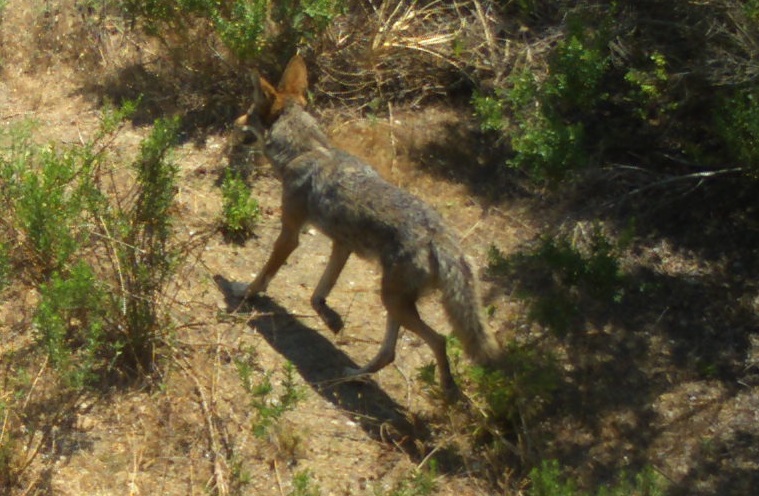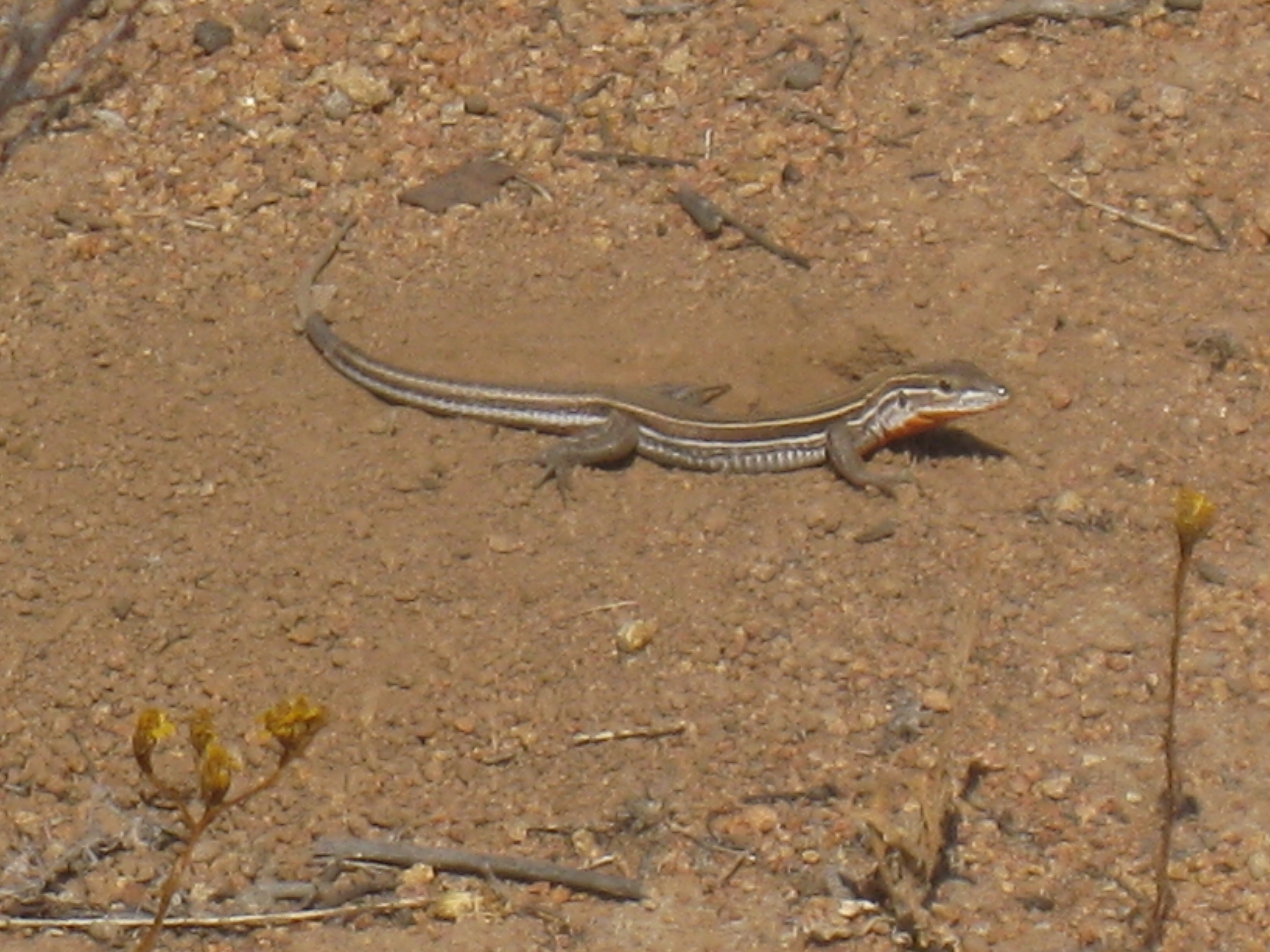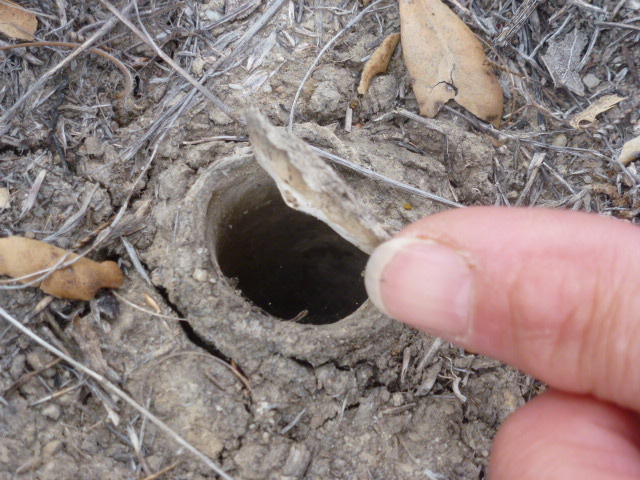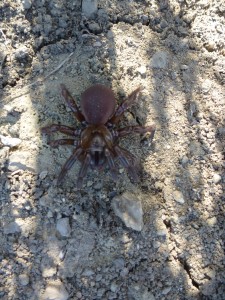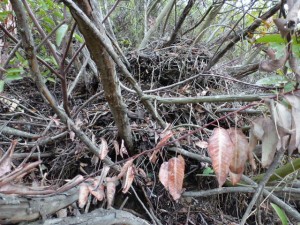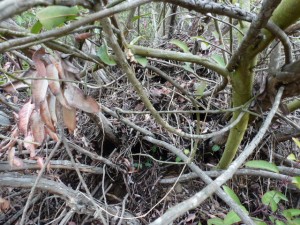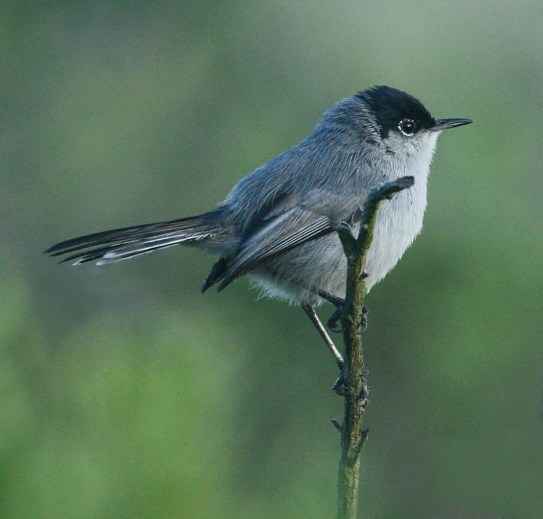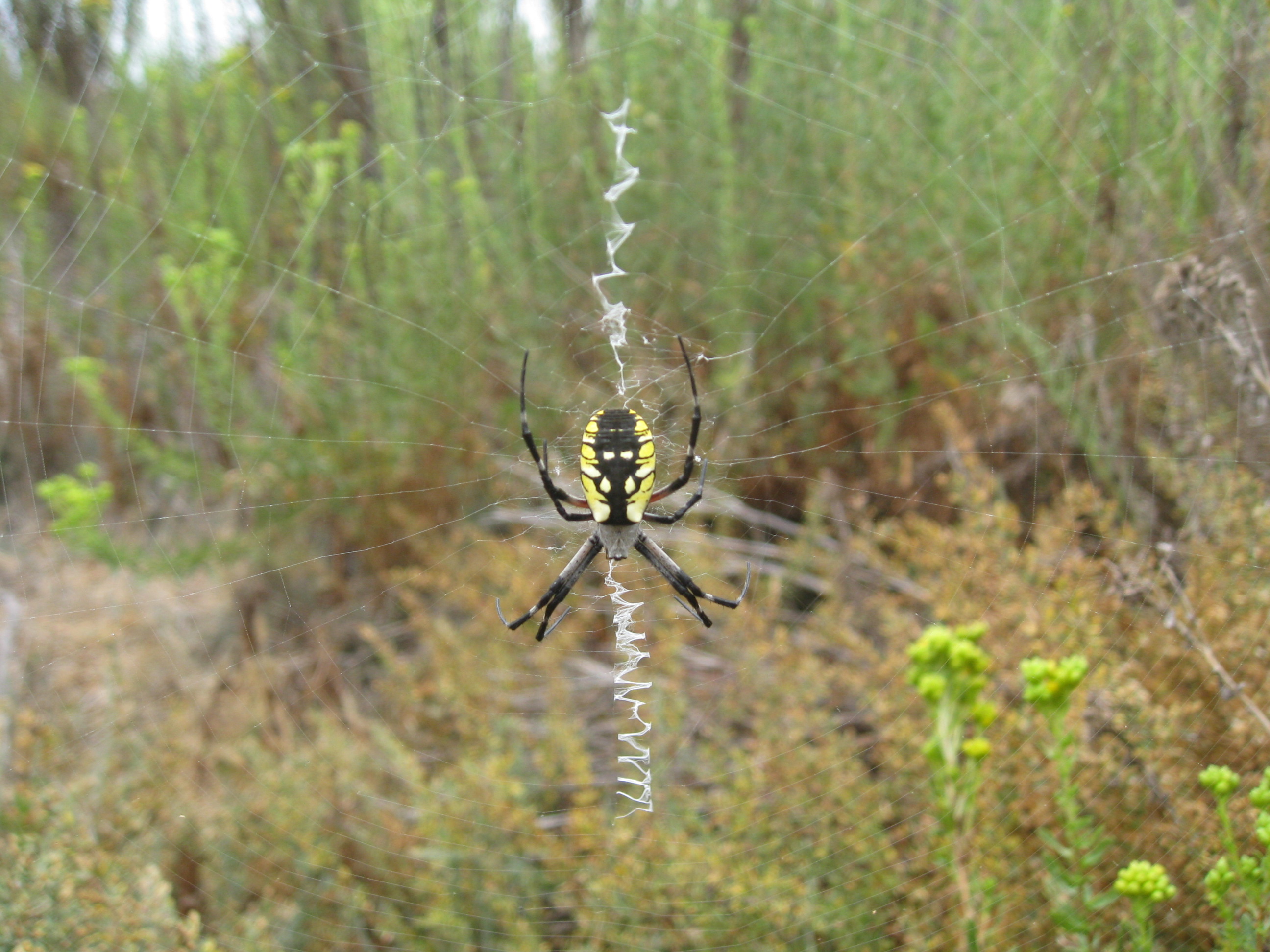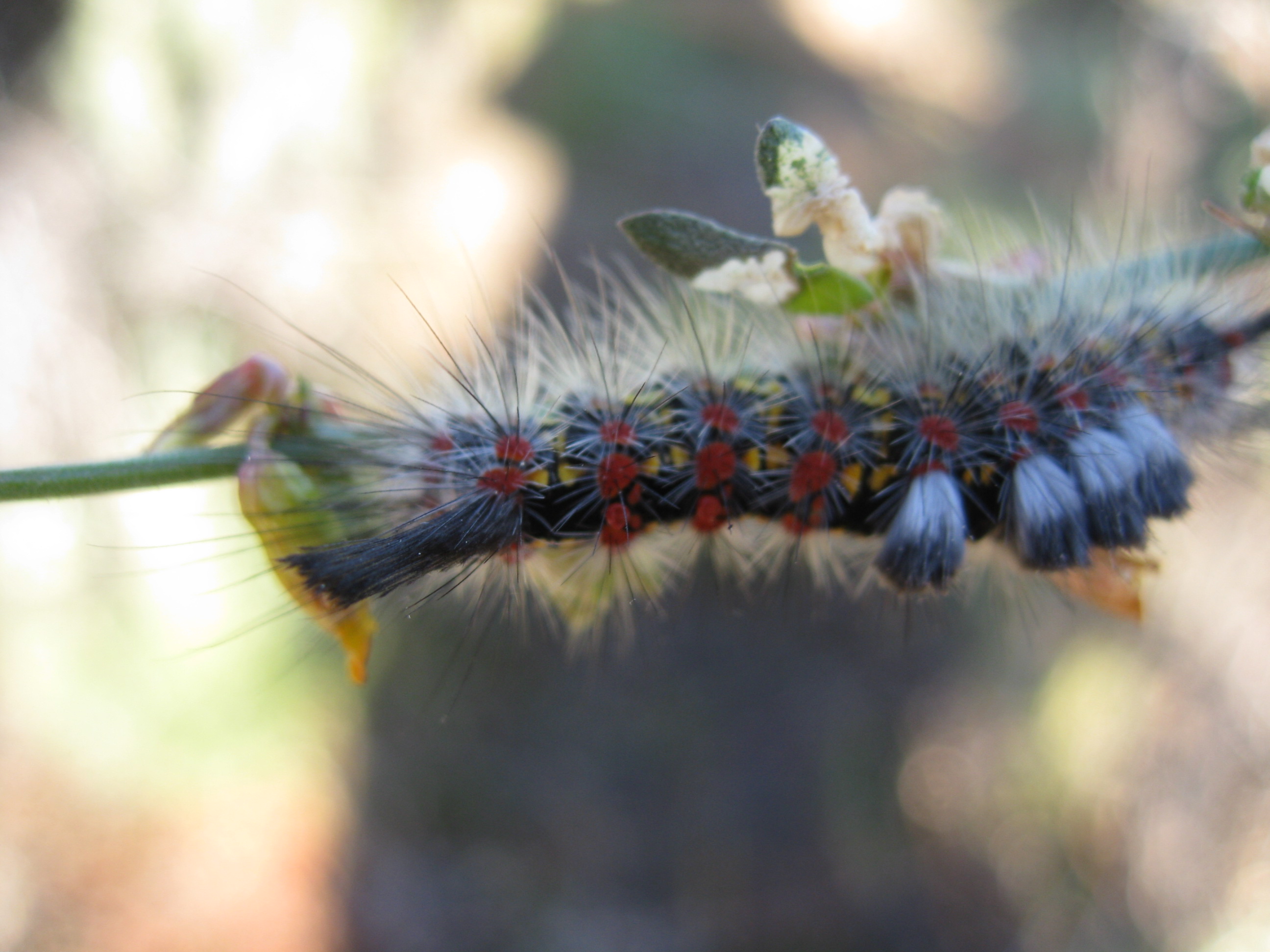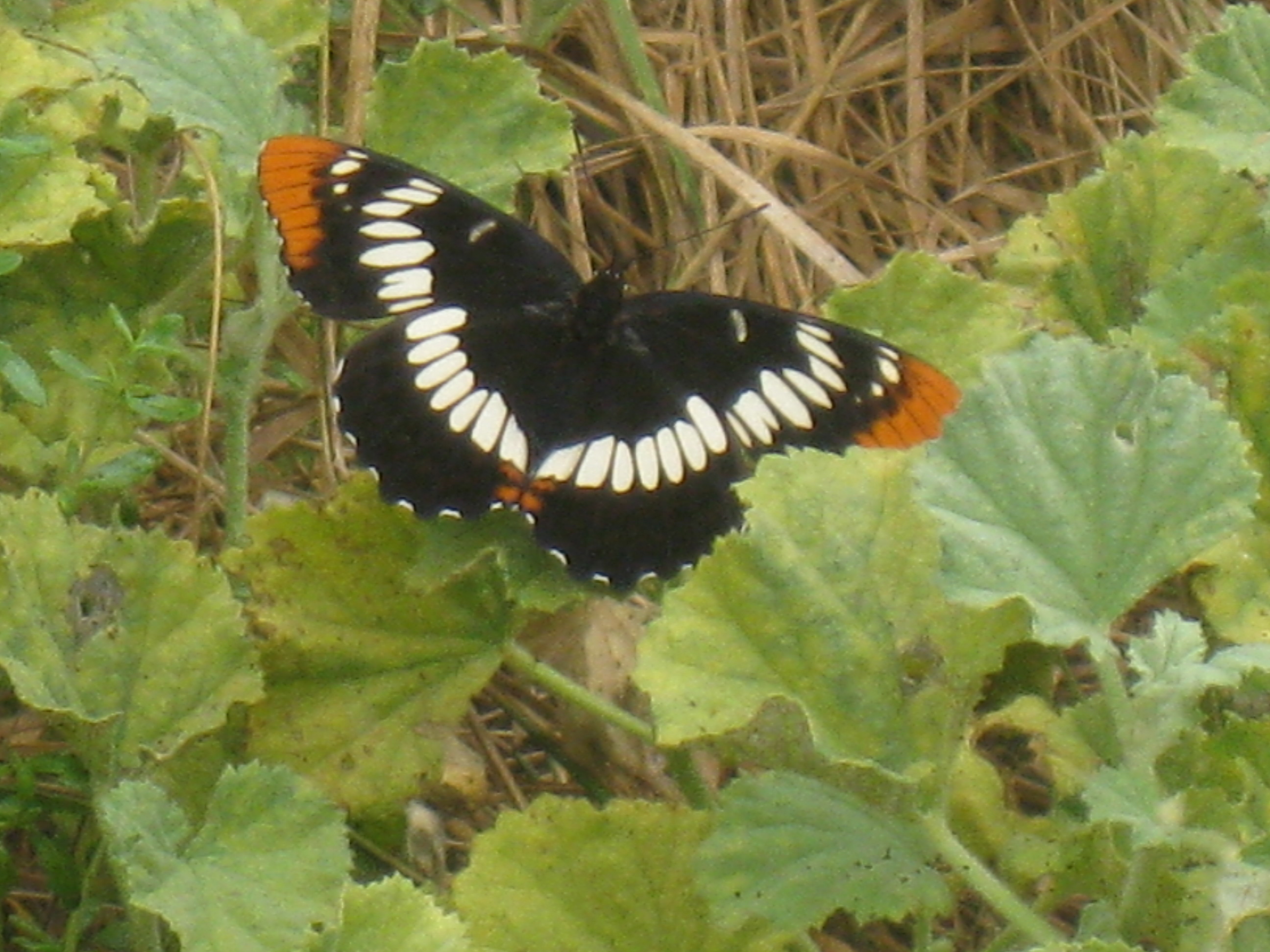Coyotes are the top predators in our coastal sage brush habitats. And they don’t necessarily stay put. Being highly adaptive, they will go where the food is which could be your backyard. Increasingly, people are putting themselves in conflict with coyotes. But there are things you can do. See the flyer from the California Dept. of Fish and Game: Keep Me Wild 2013
Recent siting/story about rattlesnakes in Calavera Preserve (March 2015) from ranger, Todd: The Calavera Glove
Lake Calavera Bird List as of 2/8/15
Kangaroo rats aren’t actually rats but mammals capable of extracting all the water they need from their environment. They drag their tails and, generally, hop on their hind feet. You should be able to see their hind feet and tail drag in the photo:
An endangered (federally) orange- throated whiptail (Cnemidophorus hyperthrus) recently seen and photographed by Karen Merrill at the Calavera Preserve (June 2014). This one is a male as evidenced by the orange throat.
Bobcat footage (our thanks to the city of Carlsbad for supplying this video)
Trapdoor spiders
At our April 12th hike, we saw lots of trapdoor spider holes. Here’s just one:
These spiders (superfamily Ctenizoidea, family Ctenizidae) are medium-sized mygalomorph spiders that construct burrows with a cork-like trapdoor made of soil, vegetation and silk. Some similar species are also called trapdoor spiders, such as the Liphistiidae, Barychelidae, Cyrtaucheniidae and some Idiopidae and Nemesiidae. (http://en.wikipedia.org/wiki/Trapdoor_spider)
Wood rats are an indicator species telling us that the habitat is reasonably healthy. In the Calavera Preserve there are many wood rat nests most commonly found under laurel sumac trees.
The California gnatcatcher is a threatened species of the chaparral/coastal sage scrub.
This pretty caterpillar turns into a rather drab moth. It likes to feed on our native deer weed among other plants. We saw it early in March, 2013.

